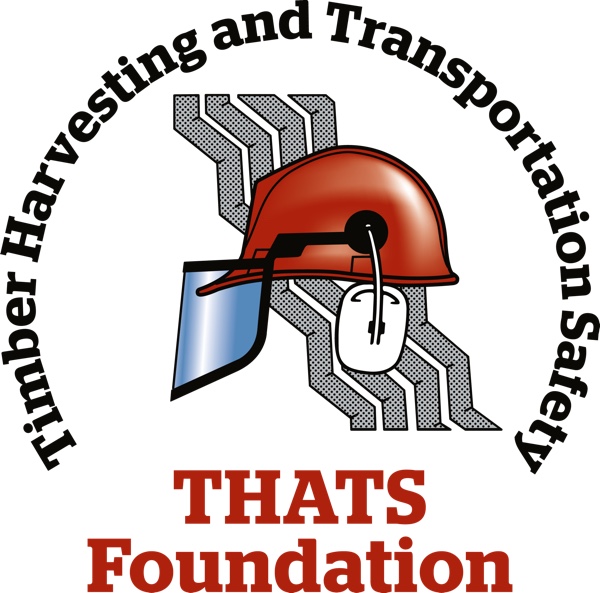INTRODUCTION
ADDITIONAL INFORMATION
New Updated 2023 Version- Pre-Order Now for 2023 Delivery!
Originally developed by FRA’s Southwide Safety Committee, the information contained in this manual is a guide to safety and general information on accident prevention in timber harvesting with ground-based logging systems. Cable yarding and helicopter logging systems have many different safety issues that are beyond the scope of this publication. The recommendations contained in this manual should not be construed or used as a substitute for compliance with applicable federal and state laws. It is advised that the appropriate federal or state OSHA office be contacted for complete details concerning the OSHA requirements for logging operations.
A WORD ABOUT THE LAW
This manual has been developed in accordance with the OSHA requirements for Logging Operations, effective February 9, 1995, and as revised September 8, 1995. However, some manual recommendations may actually exceed OSHA regulations.
The Logger’s Guide To The New OSHA Logging Safety Standards is available from the Forest Resources Association, 1901 Pennsylvania Avenue, NW, Suite 1007, Washington, DC 20006, 202-296-3937, www.forestresources.org. The Logger’s Guide provides explanations of the New Logging Safety Standards effective February 9, 1995, and as revised September 8, 1995. Additional logging safety information resources and information can be found at www.loggingsafety.com.
INTRODUCTION
Timber harvesting is hazardous. The degree of attention to safety and loss control by many employers and employees is much less than it could be. The logging industry continues to report high injury frequency and severity rates.
At every step in the logging process, from felling the tree to transporting it to the mill or yard, workers are subject to a variety of hazards from the environment, type of work, equipment, and physical and emotional strains. Still, many logging workers either are not fully trained or approach their tasks with a risk- taking attitude. While some hazards and risks as well as unsafe worker actions are difficult to control, most can be controlled, reduced, or eliminated. These controllable unsafe acts and conditions should receive the utmost priority. Not every accident or injury will be prevented, but proper safety and loss control management will minimize many risks and injuries.
The Timber Harvesting and Safety Manual is available to be purchased at a price of $12 ($6 for FRA members). Please find an order form here, print, fill it out manually, and mail or fax it to Forest Resources Association Inc., 1901 Pennsylvania Avenue, NW, Suite 303 Washington, DC 20006. Fax: 202/296-0562.
SAFETY MUST BE FIRST IN ALL LOGGING ACTIVITIES!
Investing in safety pays off. Safety pays - Accidents cost! Safe timber harvesting operations yield improved worker attitudes, safer work habits, fewer injuries, increased production, lower operating costs, and greater profitability.
Nothing you or your fellow workers do is so important that you must risk life or limb. Safety is really taking the time and making the effort to do a job correctly. Safety also involves putting training into practice, anticipating hazards, and asking for guidance when necessary. Only the people on the job, the boss and crew, can make it safe.
This manual provides practical, useful guidelines for logging operation loss prevention and safety, as well as guidelines for Emergency First Aid Treatment, the Lockout-Tagout Program, the Hazard Communications Program, and the Bloodborne Pathogens Exposure Control Plan. This manual is intended to serve as a reference guide for instituting a positive logging safety and loss control program.
ACCIDENT CAUSES
While logging injuries have been declining in recent years due to mechanization, increased safety awareness, and accident prevention, the rate remains high compared to other industries.
For operations employing manual chainsaw felling and delimbing, the most frequent and serious accidents involve workers on the ground being struck by a falling tree, limb, top, or rolling log while operating a chainsaw. For fully-mechanized operations where felling and delimbing are performed by a worker in the protected cab of a machine, a significant number of injuries occur during equipment repair and maintenance in the field. Past logging injury analyses have also pointed out that:
- Nearly one-half of the injuries incurred by equipment operators are the result of slipping and falling while mounting or dismounting their machine.
- Nearly 50% of all logging injuries are incurred by workers with less than one year's experience on the job.
- On mechanized operations, more accidents occur at the landing than in the woods.
- On fully-mechanized operations, many of the injuries reported are the result of a truck driver, equipment operator, or supervisor using a chainsaw to fell or delimb an “oversize” or “difficult-to-access” tree that cannot be processed by the feller-buncher or delimber.
Nearly all logging accidents can be prevented with a strong and consistent commitment to safety by logging business owners, supervisors, and their employees; mandatory use of appropriate personal protective equipment; periodic, frequent safety training for all workers; close supervision of new and/or inexperienced workers, zero tolerance for violation of safe working rules; and a healthy dose of common sense.
